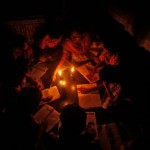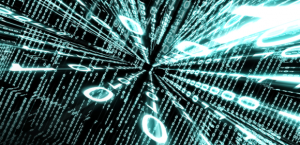 It seems we really did dodge an apocalypse, of sorts, back in 2012. In one of those sleeper stories, known but to a few learned insiders (and they might as well keep such things to themselves since no one believes them anyway), an orbiting solar observatory recorded a series of the most powerful coronal mass ejections (CMEs—analogous to solar storms) ever encountered.
It seems we really did dodge an apocalypse, of sorts, back in 2012. In one of those sleeper stories, known but to a few learned insiders (and they might as well keep such things to themselves since no one believes them anyway), an orbiting solar observatory recorded a series of the most powerful coronal mass ejections (CMEs—analogous to solar storms) ever encountered.
CMEs are more or less explosions shot outward from sunspots, which eject first X-rays and other forms of highly energetic radiation that travel at the speed of light, followed swiftly by charged particles, electrons and protons, moving nearly as fast. The sun is of course a sphere, upon which sunspots and CMEs can form pretty much anywhere. This means that the vast majority of such ejections shoot off harmlessly (from our perspective) into deep space. It’s only on those rare occasions that the CMEs line up with Earth’s orbit that we find ourselves in a pickle.
That happened memorably in 1989, when a solar storm damaged satellites, disrupted communications, and knocked out power all across Quebec, Canada. Solar weather-watchers use a complicated formula to gauge the severity of such events, determined in part by magnetometer readings at the equator. The baseline reading of the planet’s magnetic shield (when undisturbed) is zero; solar impacts knock it into negative numbers. The most routine events, the kind that produce the Northern Lights, register at about -50.
the severity of such events, determined in part by magnetometer readings at the equator. The baseline reading of the planet’s magnetic shield (when undisturbed) is zero; solar impacts knock it into negative numbers. The most routine events, the kind that produce the Northern Lights, register at about -50.
The 1989 storm registered -600. And the CME in July 2012 is estimated to have been around -1200. And yes, it was aimed directly at Earth’s orbit. It passed through an area in space that we’d occupied only about a week prior.
It’s only speculation to say what would have happened, or what would happen, if we were to be blasted by a solar storm of that magnitude. In 1859 an astronomer named Carrington witnessed an intense solar flare, that within days brought the Northern Lights as far south as Miami. The Carrington Event also actually triggered arcing, and in some cases even fires, along telegraph lines.
Our harnessing of the electron was of course in its infancy in those days, and is at this quantum level that solar-induced electromagnetic disruption is most keenly felt. We are dependent on the movement of the electron now, and a storm like the one we narrowly missed two years ago could potentially halt those movements, and devastate that dependency.
This scenario is potentially far worse than a simple power outage. To begin with, generating stations and transformers wouldn’t just be knocked offline, they’d be physically damaged. So this wouldn’t just be a matter  of flipping the switch back on once the storm had passed. Repairs could take months or years.
of flipping the switch back on once the storm had passed. Repairs could take months or years.
In the meanwhile, an economy, a society, and a culture that is in no small part digitally based would simply cease to exist for an undetermined, and indeterminable, period of time. We’d be thrust back into a pre-electrical age, circa 1800, with no frame of reference or collective experience for surviving in such a world.
circa 1800, with no frame of reference or collective experience for surviving in such a world.
It almost hurts to wrap your mind around the implications.
As is my wont, I find myself personalizing such things. And amid practical considerations—would I have enough candles? could I protect my family?—I also narrow in on what might be a petty, self-involved issue. Sorry, but I can’t seem to help it.
My body of written work, such as it is, clocks in at I reckon about a half-million words (don’t know why but we writers have become obsessed in recent years in calculating lifetime word-counts). I estimate that nine-tenths of that, up to and including these words you’re reading now, exist in electronic form only, with no durable, CME-proof copies existent.
It’s a shamefully parochial thought, I know. But it’s emblematic of a problem that many of us, if not most of us,  share. Financial and health records, much of the documentation of our very existence, are completely virtual—and evidently, completely vulnerable. Modern writers and digital artists personify the cultural side of this risk: our entire portfolios could disappear forever, in an instant.
share. Financial and health records, much of the documentation of our very existence, are completely virtual—and evidently, completely vulnerable. Modern writers and digital artists personify the cultural side of this risk: our entire portfolios could disappear forever, in an instant.
Short of getting busy with my printer (and believe me, I’m considering that), I’m not sure where to take this new-found fear. I’m not even entirely sure how great the risk is—although one of the physicists who studied the 2012 near-miss extrapolated a 12% probability that we will get hit with a solar storm of this magnitude sometime in the next ten years.
I guess most of all I’ll just take it as prophecy, the kind that you tuck into a back corner of your mind and fret over occasionally, and occasionally take half-hearted measures against. Maybe I’ll buy extra candles from time to time, and take some opportunities to learn more about surviving, and maybe even thriving, in a low-tech world. Maybe I’ll take the initiative of seeing that some of the things I write, if I deem them worthy of preserving, are preserved.
Mostly I’ll just see this digital age of ours, this new era of unconscionably dependent culture, as a little less permanent than I once thought.